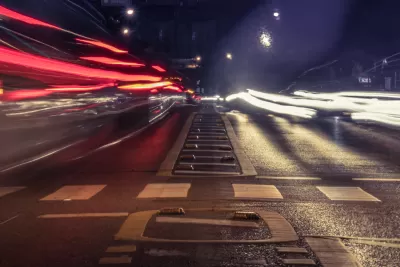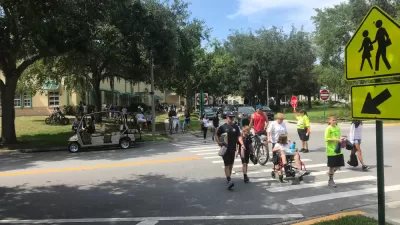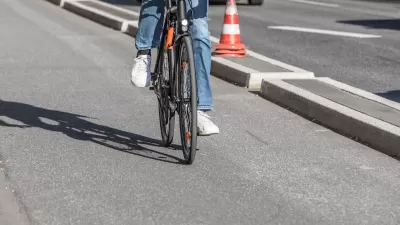When people feel unsafe, they walk less; with fewer pedestrians, walking becomes less safe.

Responding to a recent New York Times story highlighting the high rate of nighttime pedestrian deaths in the United States, Streetsblog’s Kea Wilson notes that the article, which identified some key factors in the road death crisis, missed one other point: “the dwindling number of walkers on our roads may itself be contributing to the nation’s fatality rates — and how much worse the death tolls look when seen in the context of how little Americans walk.”
While walking rates dropped by 36 percent between 2019 and 2022, pedestrian deaths increased by 20 percent. “And because walkers are generally safer in numbers, thinning that herd can have deadly consequences for anyone who remains.” As Wilson points out, the U.S. has a much higher per-mile pedestrian death rate than countries like the U.K. or the Netherlands.
Traffic engineer David Levinson calls this phenomenon as the “cycle of unwalkability,” wherein “the presence of cars worsens the conditions of pedestrians; worse conditions for pedestrians reduces walking; reduced walking increases the use of cars; repeat.”
“We don’t just need to install streetlights, redesign roads and cars, disable cell phones when their owners are behind the wheel, and give the poor the mobility and housing options they need to keep them out of harm’s way.” For Wilson, it will also take the rebuilding of “a culture of walking.”
FULL STORY: The Other Reason American Pedestrian Deaths are Rising After Dark

Planetizen Federal Action Tracker
A weekly monitor of how Trump’s orders and actions are impacting planners and planning in America.

San Francisco's School District Spent $105M To Build Affordable Housing for Teachers — And That's Just the Beginning
SFUSD joins a growing list of school districts using their land holdings to address housing affordability challenges faced by their own employees.

The Tiny, Adorable $7,000 Car Turning Japan Onto EVs
The single seat Mibot charges from a regular plug as quickly as an iPad, and is about half the price of an average EV.

As Trump Phases Out FEMA, Is It Time to Flee the Floodplains?
With less federal funding available for disaster relief efforts, the need to relocate at-risk communities is more urgent than ever.

With Protected Lanes, 460% More People Commute by Bike
For those needing more ammo, more data proving what we already knew is here.

In More Metros Than You’d Think, Suburbs are Now More Expensive Than the City
If you're moving to the burbs to save on square footage, data shows you should think again.
Urban Design for Planners 1: Software Tools
This six-course series explores essential urban design concepts using open source software and equips planners with the tools they need to participate fully in the urban design process.
Planning for Universal Design
Learn the tools for implementing Universal Design in planning regulations.
Smith Gee Studio
City of Charlotte
City of Camden Redevelopment Agency
City of Astoria
Transportation Research & Education Center (TREC) at Portland State University
US High Speed Rail Association
City of Camden Redevelopment Agency
Municipality of Princeton (NJ)




























